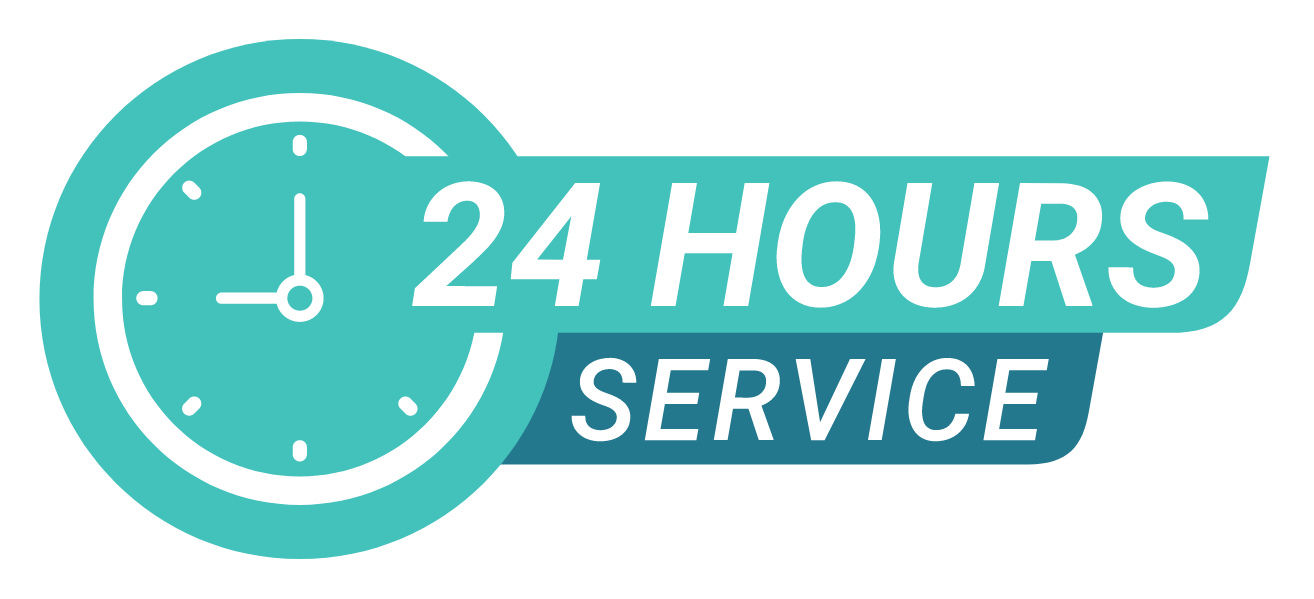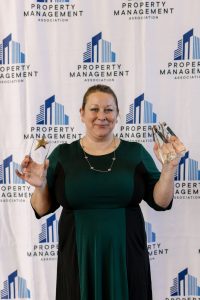You walk into your basement one day and see it. Unmistakable black or green patches of mildew-y, powdery fungus have taken up residence in a dim, damp corner of your basement or garage. If you are a regular consumer of the nightly news, your first reaction might be to panic. Indoor mold and its resulting health risks are a popular topic these days. However, understanding the basic hows and whys of indoor mold can help ease your fears and help you tackle any issues head on.
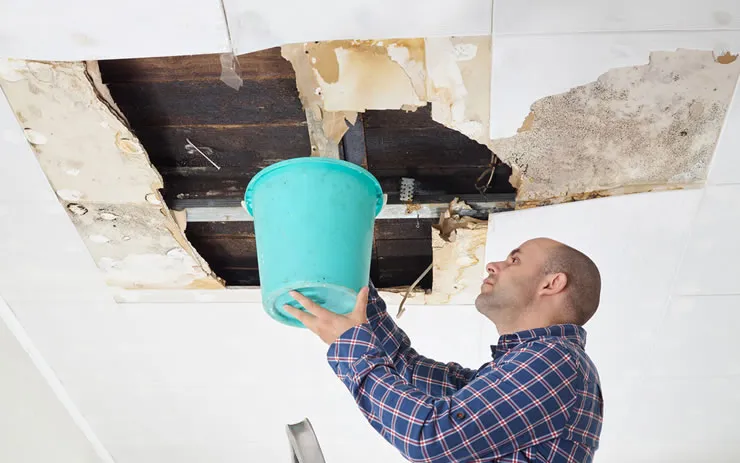
In general, you should know that EVERY HOME HAS MOLD. In fact, the indoor air environment is a delicate balance of delightful effluvia: bacteria, fungi, animal dander, bugs and bug parts, pollen, et cetera. Most of the time, this atmospheric cocktail doesn’t bother us– in fact, we don’t even notice it.
Indoor mold only becomes a problem when when the delicate harmony of the ecosystem is thrown off– causing spores to rapidly multiply on building materials. This mold uprising usually occurs after some sort of prolonged water issue– which is why it’s so important to make sure indoor moisture issues are quickly (and properly) treated.
Mold needs three things to start wildly multiplying: a food source, heat, and humidity. Your home has more than enough food available to grow happy mold colonies: wood, drywall, cellulose. When excessive moisture is present around these food sources, it doesn’t take long for mold spores to rapidly multiply. It’s the same principle as adding active dry yeast to a (moist) bread dough, and then setting the dough somewhere warm to rise. In the ideal environment, visible mold growth can appear within 48 hours of a moisture or humidity issue.
There are three main categories of mold growth:
- Allergenic Molds: These kinds of molds are not typically dangerous in small quantities, but may contribute to allergic reactions if disturbed or allowed to grow rampant. Allergenic molds may contribute to symptoms of rhinitis or asthma, particularly in immunocompromised individuals.
- Pathogenic Molds: Molds considered pathogenic (or infectious) are molds that can actually grow on or within human hosts. Gross. These molds can cause devastating health effects for anyone, but particularly in those who are immunocompromised, elderly, or undergoing chemotherapy.
- Toxigenic Molds: These molds present serious health risks because they produce or contain actual poison. These molds produce mycotoxins, or toxic metabolites (think: mold farts). Mycotoxins are known to comprise some of the most poisonous substances on the planet, and are capable of causing illness or even death in otherwise healthy humans. Therefore, toxigenic molds should be quickly and professionally removed as soon as possible.
Now, let’s address the elephant in the room: black mold. As mold remediation experts, this is hands down the first thing we’re asked about when our customers bring up potential indoor mold. What you should know is that culprit commonly referred to as “black mold” is actually a certain kind of toxigenic mold called Stachybotrys chartarum. It’s also important to point out that black-colored molds are usually NOT stachybotrys (the most common black-colored mold is Cladosporium, an allergenic mold). The only way to know for sure if you’re dealing with a toxic mold is to have a
professional do testing. The mycotoxins produced by stachybotrys are notoriously harmful and difficult to remove. In fact, the mycotoxins produced by stachybotrys are so toxic, they have been used as intentionally in biological warfare. Unlike most common household molds, the spores in stachybotrys take much longer to spread and grow–generally over a span of weeks, instead of days. Therefore, it’s most likely to crop up in areas with long-term, unnoticed moisture issues, such as around undetected pipe leaks.
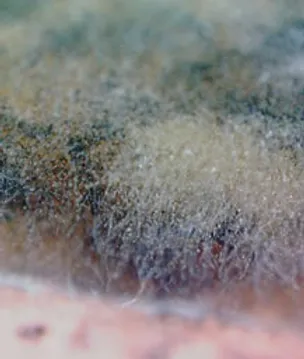
The best way to get rid of a mold problem is to never have one to begin with (we’ll touch on that in a bit) – but here are a few frequently asked questions about mold.
Q. Can I clean it up myself, with bleach for example?
A. If you’re dealing with very small areas of mold (less than 10 square feet or roughly the size of a bath towel), the EPA does provide guidelines for self-treatment. However, in most situations, it’s best to call in a professional. While bleach makes for a very fine surface cleaning agent, it’s generally ineffective at removing mold colonies, which can thrive deep within affected structures. It’s also ineffective at removing dead spores (which can be as harmful as live colonies) and is virtually useless when it comes to neutralizing mycotoxins. Likewise, you shouldn’t attempt to paint over visible mold colonies. This does nothing to remove the underlying cause of growth and is only a (temporary) cosmetic repair– it will come back!
Q. Do I need to test for mold?
A. That depends! If you can see mold, on a wall or other building materials, you don’t *officially* need to have it tested. The presence of visible mold should indicate to you that conditions are present which allow mold to thrive. ANY colonies of indoor mold should be treated and remediated. Even non-toxic mold should be treated as soon as possible. After all, mold is using your home as a source of food–literally eating away at the structure of your home.
All types of mold are treated and removed in the same careful manner, so your remediation pro doesn’t need to test it in order to properly restore your property. If you’re experiencing signs of mold allergy or toxicity or suspect a mold issue that is not visible, getting testing done is not a bad idea (also consult a physician– do not self-diagnose mold-based illnesses). You may also wish to have a test done post-remediation by a neutral third party to ensure that the mold problem was correctly removed.
Q. What are some symptoms of mold if I don’t see anything?
A. There are many signs you can look for when playing mold detective. A musty, moldy or mildew-y odor can be a sign of mold growing behind walls or in other hard to detect areas. New or worsening health symptoms such as allergies can also be a sign of a mold issue (again, don’t self-diagnose any medical concerns and consult a physician). Having past water damage or having humidity high enough to cause condensation on surfaces are also conditions that can grow hidden mold.

So, what are the steps involved in a mold remediation? Due to unique circumstances, building materials and environmental conditions, no two mold jobs are the same…just like no two homes are the same. Believe it or not, there are many regulatory bodies involved with ensuring that mold remediations are completed to safe standards. The EPA is one such organization that is involved with setting safe guidelines for indoor mold. The Institute of Inspection Cleaning and Restoration Certification (or IICRC) is another such organization that actually sets cleaning and testing standards for mold removal.
As mentioned before, regardless of the potential toxicity of mold, the steps to assess and treat a mold contamination are the same.
- The first step when beginning any mold remediation is to ensure that the underlying cause of the mold growth is no longer a factor. That means any preexisting leaks, condensation or chronic humidity problems have been dealt with and solved.
- Once you have dealt with the cause of your mold issue, your remediation professional will conduct a walk-through of the affected areas in order to visually assess the extent of the damage.
- During this time, they will take detailed measurements of the affected areas and rooms, and will take moisture and humidity readings to help formulate the best plan of action. They will also document the area with “before” photos — this may also include infrared photos, which can help “see” any underlying moisture behind walls.
- Contents and furniture which may have been affected by mold will be cataloged and documented. Anything that can be saved is carefully moved to a secure, climate-controlled facility (if need be) to be further assessed and cleaned.
- Once the affected areas of your home are cleared, they will be carefully contained with a thick, secure plastic barrier. This prevents mold from cross-contaminating clean parts of the home during the cleaning process. Air ducts and vents will also be sealed off at this time.
- Before any structural cleaning or demolition begins, special equipment called air scrubbers with HEPA filters are then placed in the contained areas. These machines work to create a negative air pressure against the contained rooms and physically filter the air of mold spores.
- Next, any building materials that cannot be salvaged, including moldy drywall, baseboard, ceiling tiles, tack strips, and carpet will be carefully double-bagged and safely discarded according to local and federal regulations.
- Any remaining hard surfaces (such as ceramic or glass tile, wood, cement, and similar) are treated with anti-microbial germicide.
- We HEPA-vacuum all building surfaces, including floors, walls and ceiling. By the way, HEPA, or High Efficiency Particulate Air filtration, is extremely effective (99.97%) at removing very, very, tiny particles – like mold spores – up to .3 microns in diameter.
- In the event of suspect microbial growth within structural materials, wood surfaces may be sanded, wire brushed, or treated with CO2 to remove and kill surface spores. Wood and concrete surfaces may also undergo encapsulation, which seals in any residual mold spores and inhibits further mold growth within the material.
- After the work is completed, containments and equipment are demobilized.
- Finally, “after” pictures of every previously-affected area are taken to show the completed work.
- At this time, it is strongly recommended you retain a neutral, third party testing company or industrial hygienist to come in and perform clearance testing. Hiring a neutral party ensures that work is being tested independently against approved standards.
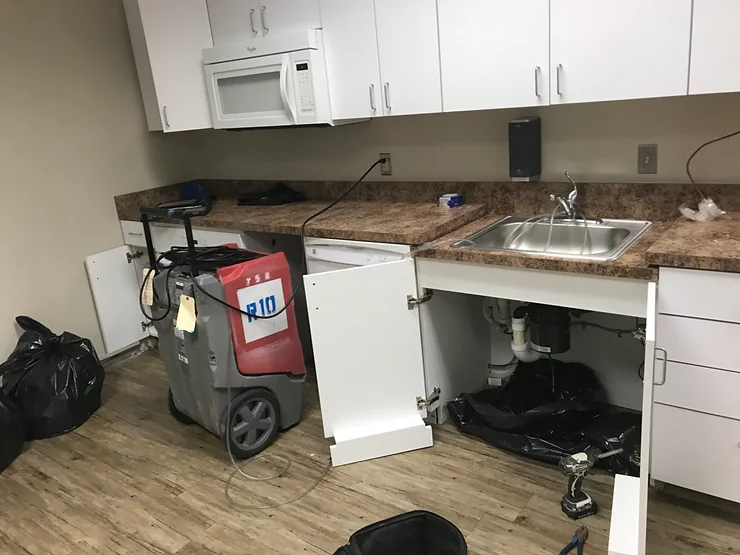
As you can ascertain, the steps to removing mold from a property can become complex and extensive, especially if the mold contamination is large. As you may guess, the cost to perform extensive microbial remediation can also grow expensive – particularly because insurance coverage for mold tends to be limited or non-existent. As a wise person may have said to you before, an ounce of prevention is worth a pound of cure: the best, most cost-effective and easiest way to remove mold damage is to never have it to begin with.
As touched on earlier, mold growth thrives in environments where it has a food source, combined with warmth and moisture. Preventing moisture indoors is key to ensuring an indoor mold problem never pops up. For this reason, ANY indoor water intrusion should be considered an emergency and treated as soon as possible. Leaks should be quickly dealt with and any ensuing water damage should be dried out as soon as possible. If you have suspicions about an ongoing plumbing issue (reduced water pressure, drips or other visible water), contact a trusted plumber as soon as possible. You should also regularly inspect your roof and gutters to keep attic damage at bay.
Aside from preventing acute water damage, you should also be mindful of indoor humidity in general and strive to keep relative humidity under 60%. This will help reduce areas of condensation, which can create breeding grounds for mold, and will also maintain general indoor comfort. Ensure moisture-producing appliances (dryers, stoves) vent properly to the outdoors whenever possible. Use exhaust fans after showering, or while cooking or using the dishwasher.
Looking for more advice on preventing or treating indoor mold damage? Here are some useful resources we’ve compiled to help you on your way.
- Common Indoor Molds
- A Renter’s Guide to Mold Damage
- Environmental Protection Agency Page on Mold
- Mold – Keep It Out of Your Home (from the Indoor Air Quality Association)
- Resources for Mold – Montgomery County, MD
- Resources for Mold – Fairfax County, VA
- Information on Mold – Frederick County, MD
- Mold Facts – Maryland Department of Health
- Mold Resources – Virginia Department of Health
- Mold – What to Do – DC Department of Energy & Environment
As always, Tri State Restorations has skilled mold experts on staff who are always available with advice. If you think you’re at risk of mold damage, we are standing by to schedule your priority inspection, consultation or an estimate. Call us today – 866-818-1949. We are proudly certified by the IICRC, the Indoor Air Quality Association, and the EPA.
#mold #blackmold #mildew #molddamage #waterdamage #moldremoval #moldmitigation #stachybotrys
Sharing is caring!



